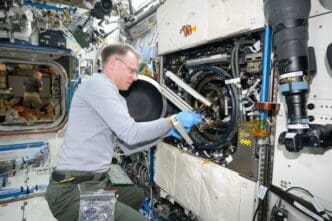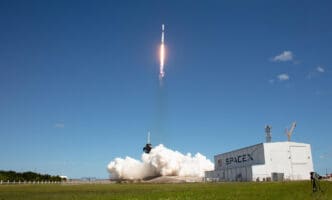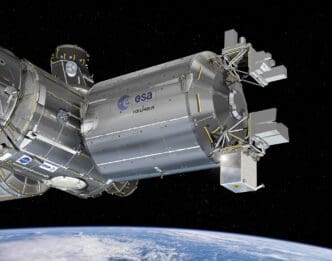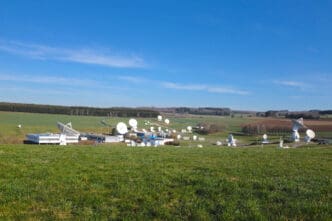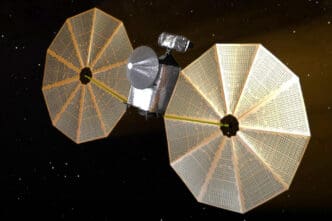The students at Thomas Edison EnergySmart Charter School had an extraordinary opportunity. They engaged with NASA astronaut Nick Hague. It’s not an everyday event when space reaches into a classroom. Curiosity sparked as they prepared for the Q&A session.
NASA’s work doesn’t just stay in space. It touches lives on Earth. In Somerset, New Jersey, young minds gathered to connect with a real astronaut. The anticipation was palpable as astronaut Nick Hague was prepared to answer their STEM questions from the International Space Station.
Preparing for Liftoff
The buzz in the classroom was electric as students prepared their questions. This wasn’t just a pop quiz; it was a chance to connect with someone orbiting Earth. They wanted to know everything, from how food tastes in space to how astronauts avoid loneliness. It was a unique learning experience, combining curiosity with the vast wonders of space.
A Space Odyssey in New Jersey
New Jersey isn’t just about bustling cities and quiet suburbs. It hosted a cosmic conversation that bridged Earth and the stars. The sound of an astronaut’s voice answering questions from above was surreal. Students listened intently, eager to understand life in zero gravity.
While watching the space-to-Earth call, curiosity piqued when Nick Hague explained the day-to-day life aboard the ISS. Fascinated, students learned how astronauts harness the power of SCaN’s Near Space Network to stay connected with the Mission Control Center.
The International Space Station: A Living Lab
Astronaut Hague described the ISS not just as a space hub but as a living laboratory. Each day, they work on new research that could benefit our lives here on Earth. He emphasized how experiments in microgravity can lead to breakthroughs.
Learning about these investigations, the students appreciated how space research impacts daily life. Benefits extend beyond the stars, influencing advances in medicine, robotics, and even climate science. NASA’s work is not just about exploring space; it’s about improving our life on Earth.
Future Explorers Inspired
The interaction with an astronaut sparked a wave of inspiration among the students. Teachers noticed renewed enthusiasm for STEM subjects. Their imaginations flew beyond the classroom walls, envisioning careers that might one day take them to space.
STEM dreams were born that day, with students discussing what they’d heard well into the evening. This was not just education; it was inspiration. It made the distant seem achievable.
Technology’s Role in Space Education
The event underscored the role of technology in education, with tools like video calls making distant places like space more accessible. It blurred the lines between classroom lessons and real-world applications.
This wasn’t just a demonstration of advanced tech; it showed the potential for interactive and engaging education. Technology connects, teaches, and inspires. These young minds saw firsthand how limitless their learning could be.
Communicating Across the Stars
Nick Hague’s call from the ISS relied on NASA’s sophisticated communication networks. This behind-the-scenes tech ensures astronauts and Mission Control remain in contact.
The insights into how communication technology works in space ignited interest among the more tech-savvy students. They realized the importance of continuous innovation in maintaining those channels open.
The Path Ahead: Moon and Mars
The discussion also touched on NASA’s future missions beyond the ISS. Nick Hague mentioned the Artemis Program, destined to take humanity back to the Moon as a stepping stone to Mars.
Astronaut Hague’s enthusiasm was contagious as he described the Moon missions’ role in paving the way for human presence on Mars. As the dialogue concluded, dreams of becoming astronauts took stronger root among the students.
A Local Perspective on Global Science
The event in Somerset showcased how global science initiatives reach local communities, inspiring young explorers.
From a simple classroom in New Jersey, a bridge was formed to the infinite possibilities of space exploration. It reminded everyone of the shared human experience of curiosity and discovery.
Questions That Reach Beyond the Stars
The student’s questions reflected a keen curiosity about their universe. Each answer from Hague felt like a small piece of a vast puzzle.
In their pursuit of knowledge, these students began a journey that could one day lead them to uncover new worlds themselves. One simple call held the potential to inspire future astronomers, engineers, and scientists.
The Day Space Came to Class
For those 20 minutes, space was no longer a distant frontier but a part of their classroom experience. It was a day that changed perceptions and sparked new ambitions.
The extraordinary Q&A session with Nick Hague left a lasting impression. Students were inspired, questions were answered, and dreams took flight.

